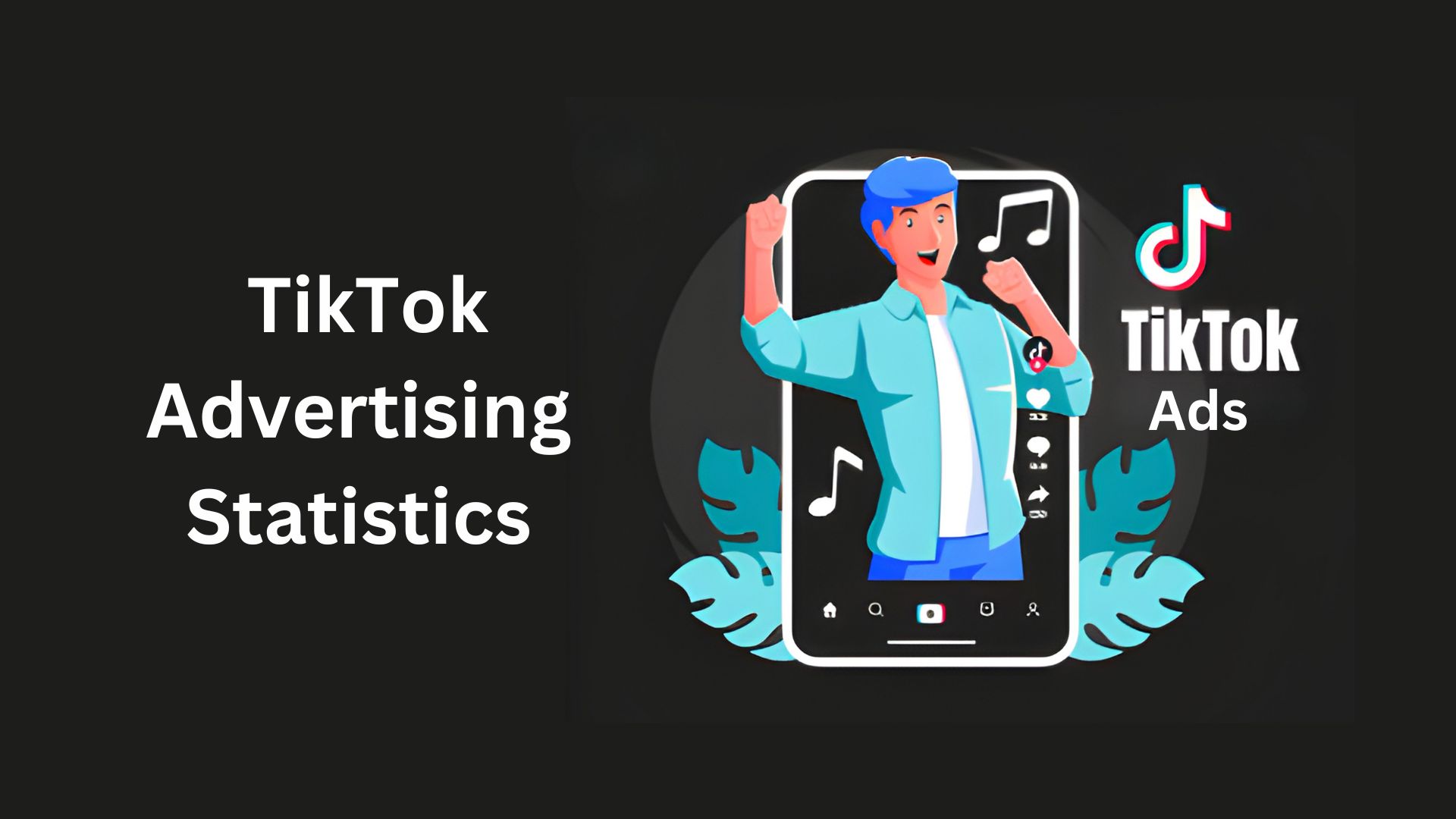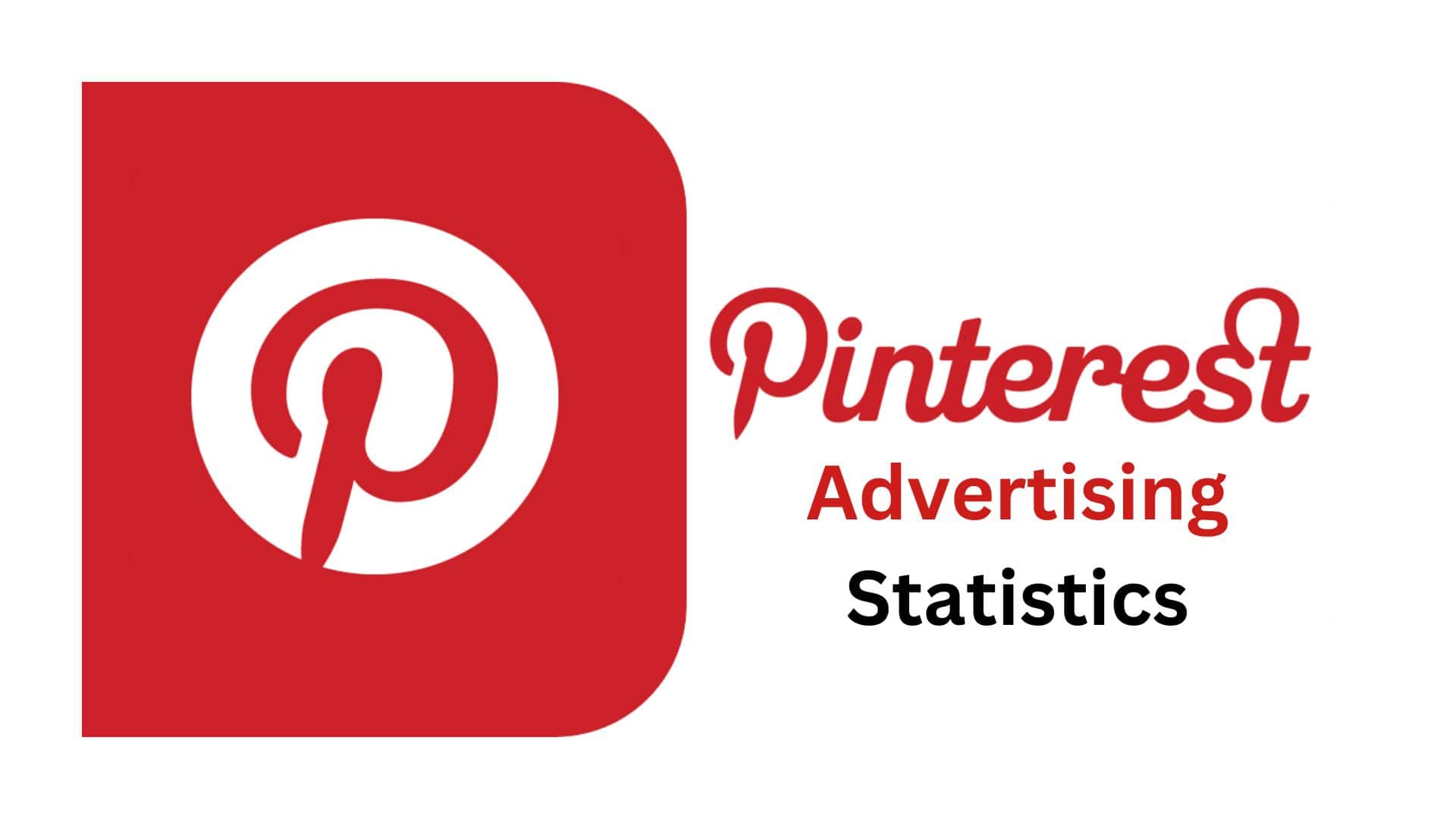Smart TV Statistics By Market Size, Region, Key Players, Operating System, Generation, Trend and Recent Developments (2025)
Updated · Oct 16, 2025
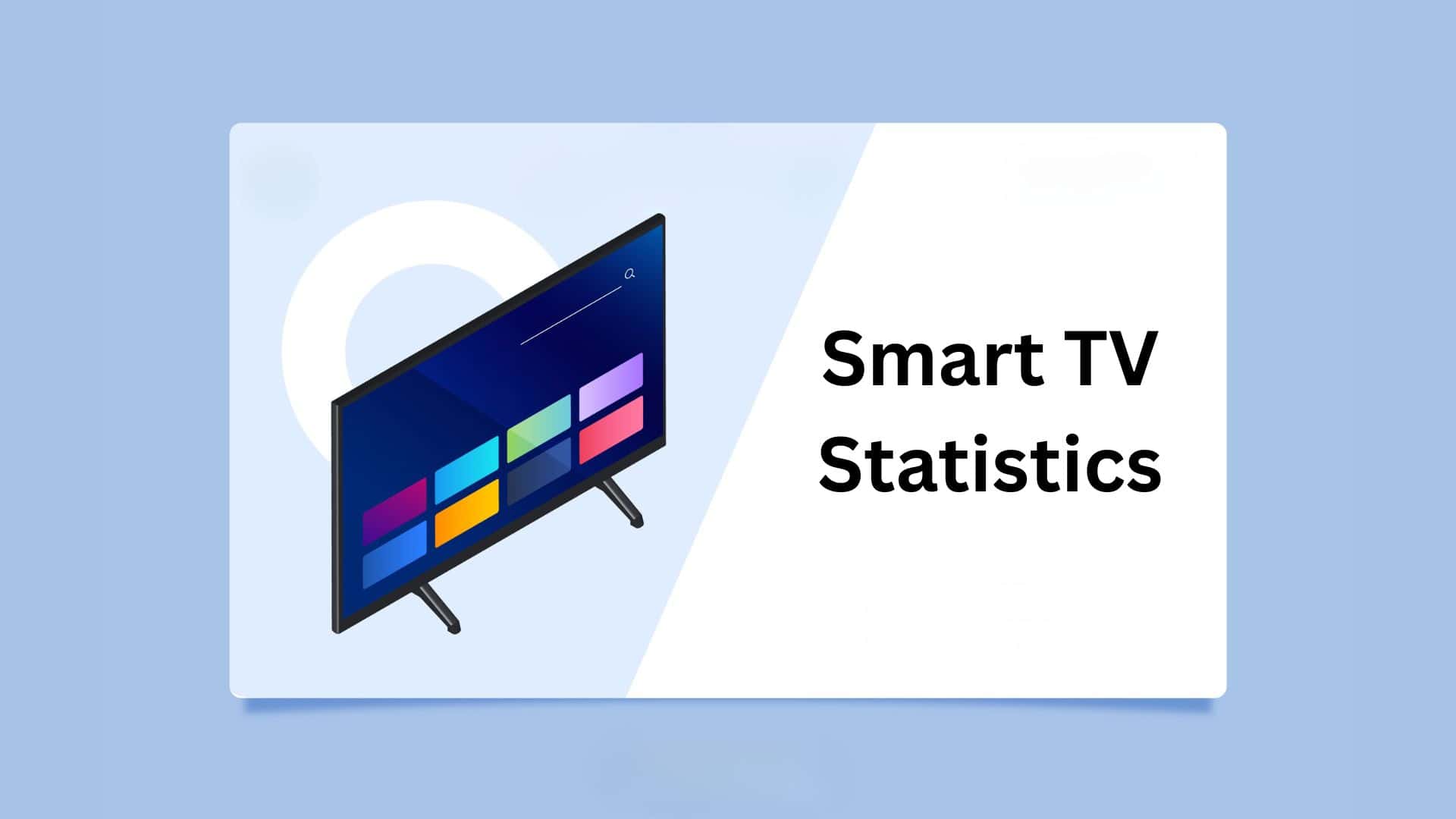
Table of Contents
Introduction
Smart TV Statistics: In the past, Smart TVs gradually got to the point where they took over living rooms worldwide without even making a noise. They changed their identity from merely “TVs” that streamed content to an all-in-one machine consisting of streaming boxes, game hubs, smart-home controllers, and ad channels, but all on one thin screen.
The smart TV market of 2025, being big, mature, and transitioning from “who has one” to “how they are used”, is the focus of this piece. This article will disclose the Smart TV statistics 2025, such as market size, operating system share, and brand leaders.
Editor’s Choice
- The global smart TV market was valued at $223.09 billion in 2023 and is estimated to reach $668.53 billion by 2033 with a remarkable CAGR of 11.6%.
- Adoption of smart TVs was widespread, as proved by the ownership in the UK, which went from 11% in 2014 to 67% in 2022.
- The 43-inch smart TVs are the most preferred size, providing a good mix between cost and performance.
- The Asia Pacific region was the largest market for smart TVs, accounting for 38% of the total in 2021. It is expected to lead the world’s growth in the next ten years, coming from India and China.
- Xiaomi was the global leader in market share, holding 14%, followed by Samsung (13%), LG (12%), TCL (8%), and OnePlus (7%).
- In the U.S., the smart TV industry brought in $18 billion in 2023, and the revenue is expected to go up at a CAGR of 0.79% until 2028.
- India’s smart TV market will be worth $11.7 billion in 2023 and $32.57 billion by 2030, a CAGR of 16.7%.
- China’s market will expand at a CAGR of 16.5% by 2033, as a result of the increasing sales of connected and premium TVs.
- The number of global smart TV owning households is going to be more than 1.1 billion by 2026, which equals 51% of the homes worldwide.
- The leading OS is Android TV with a 35% market share, followed by WebOS (25%), Tizen (20%), Roku (10%), and others (10%).
- The most popular display technology remains 4K TVs with a 60% share of the market, while 8K TVs are still limited to 10% due to their price and content availability.
- Millennials are the U.S. smart TV users’ group of 61.5 million persons, followed by Gen Z (52.2M), Gen X (51M), and Boomers (33.1M). By 2025, the number of Millennial users will reach 62.6M, while Gen Z will grow to 56.1M, and Boomers will decrease to 31.6M.
- The worldwide smart TV OEM platforms market is expected to increase from $449.74 billion (2024) to $966.87 billion (2033), thus the CAGR will be 10.04%.
- Amazon Fire TV commands a 17% global market share and enhances voice-enabled user experience by integrating Alexa and Prime Video.
Global Smart TV Market
(Source: scoop.market.us)
- The global market for smart TVs, on the other hand, is on the upswing. The valuation for the market was approximately $186.5 billion in 2023 and is likely to be about $363.5 billion by 2033.
- This uptrend signifies a strong CAGR of 6.9%, which is good evidence of constant demand and ongoing technological development.
- The numbers on the rise can be ascribed to the fact that a greater number of traditional TVs are being replaced by smart ones, along with the increasing popularity of streaming services, integrated apps, and smart home connectivity.
- In the last ten years, the adoption of smart TVs has skyrocketed in households worldwide.
- For example, in the UK, the number of households owning a smart TV increased significantly—from 11% in 2014 to almost 67% in 2022.
- This indicates that smart TVs have transitioned from being a luxury or gimmick to a popular household necessity.
- Moreover, along with the increase in sales of large screens, the preference has changed.
- Consumers have become accustomed to bigger displays, and they expect nothing less than the best in terms of viewing experience.
- Among them, the 43-inch Smart TV is the one seeing the largest shipment growth, and it seems to be located just right between the price range and the space needed for the screen.
Smart TV Market Size By Region
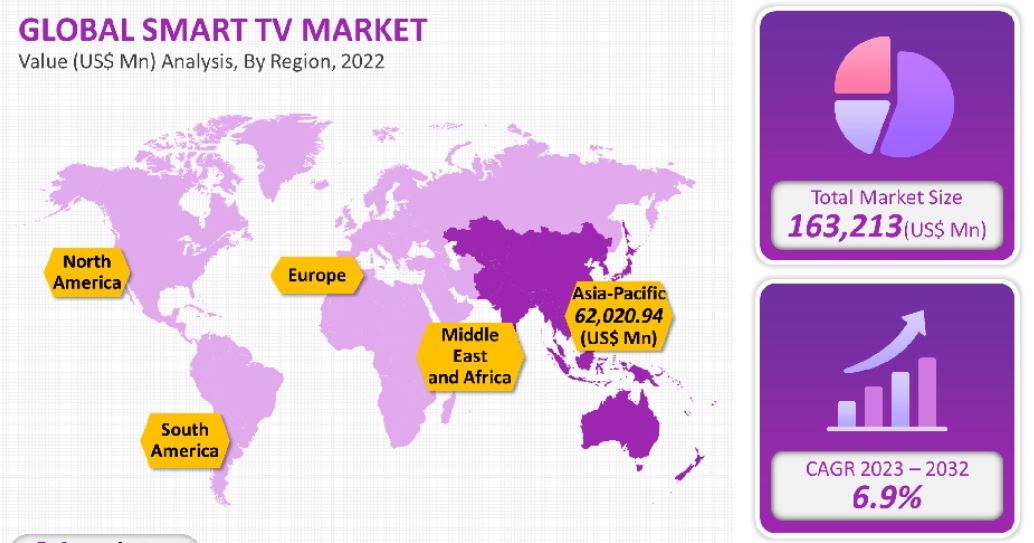
(Source: scoop.market.us)
- As per Market.us, Smart TV statistics show that the global smart TV market in 2021 was predominantly dominated by the Asia Pacific region, which contributed nearly 38% to total sales.
- Furthermore, the area is going to record the highest growth rate during 2023-2032, mainly due to the widespread use of smart televisions among consumers in developing nations like India.
- The other major reason for the expansion is the growing affinity towards 4K display technology since people in that area are increasingly favouring the TVs, giving them sharper image quality along with modern and compact designs.
- The underlying reasons for the trends will probably be the opening of new windows for the companies in terms of their revenue generation.
- China is still a significant player in determining the direction of the regional market.
- As a consequence, the competition level has become even higher with the new brands like TCL Corporation and Hisense Co., Ltd. taking on the giants and proclaiming their presence by providing their customers with top-notch quality at an economical rate.
- However, the Middle East and Africa are also visibly attractive areas for smart TVs. The annual growth rate (CAGR) of the market is estimated to exceed 12% from 2023 to 2032.
- This means the smart TVs are slowly but steadily gaining acceptance in the areas, thus making the global character of the industry’s growth very clear.
- Xiaomi is standing at the top of the smart TV industry worldwide in terms of market share with the figure of 14% as of 2023, indicating the stronghold of the brand in the Asian markets and the growing reach globally.
- Samsung is the closest competitor with a share of 13% thus, it is still the leader in the field of premium smart TVs. LG is occupying the third place with a share of 12%, which is excellently recognised for its OLED display technology and innovation.
- Among others, TCL with 8% and OnePlus with 7% are the other main companies, both of which are to a large extent entering the untapped markets quickly due to their low-priced but rich-featured models.
- Revenue-wise wise the U.S. was the largest smart TV market in 2023, bringing $18 billion from the sales of smart TVs.
- The U.S. smart TV market is predicted to grow slowly at a rate of 0.79% CAGR until 2028, portraying a mature and stable market.
- On the contrary, India’s smart TV market was worth $11.7 billion in 2023 and expected to grow even more up to $32.57 billion by 2030 with an impressive 16.7% CAGR.
- Factors contributing to this growth include urbanisation, easy internet access, and the availability of cheap 4K TVs.
- The same pattern of growth will be seen in China, where the smart TV market is anticipated to expand at a 16.5% CAGR until 2033 because of the huge customer base and the increasing demand for high-end connected TVs.
- Worldwide, the ownership of smart TVs is expected to increase to 1.1 billion households by 2026, marking 51% of the total global households.
- This implies that during the next few years, more than 50% of the homes globally will be equipped with smart TVs, thus further affirming their role as the main element of modern entertainment.
Smart TV Operating System Statistics
- In the case of operating systems, Android TV is the king of the smart TV market with a 35% share in 2023.
- Its success is attributed to the fact that it is a very flexible operating system, it has access to Google Play (the app store), and it is widely adopted by different TV makers.
- LG’s webOS, however, is in the second spot with a 25% market share as it is well-known for its easy-to-use interface and seamless streaming experience.
- Samsung’s Tizen, which is an in-house OS, is not far behind with a 20% market share, as it provides tight integration with Samsung’s total smart ecosystem.
- Roku TV holds 10% of the market share, mainly in North America, while other lesser-known OS make up the rest 10%.
- Among the tech leaders, OLED and QLED displays are the ultimate smart TVs, which are destined to grab the audience’s attention due to their astounding brightness, colour precision, and contrast.
- No doubt, the advanced technologies like Artificial Intelligence (AI) for tailored suggestions, 8K resolution, and Internet of Things (IoT) connectivity are becoming more common.
- However, the basic LED smart TVs have been losing the battle against their more premium counterparts and are facing the problem of disadoption, which is mainly the cause of the latter’s popularity.
- Smart TV feature have not yet reached their full potential, still the manufacturers still have to face troubles pretty high on the list.
- The very basic of these problems is that in some regions, content is not yet available; besides that, there are issues with compatibility with old devices or apps, and even more, security concerns arise when it comes to data privacy.
Smart TV Generation
- Smart TV usage varies a lot depending on the age of the users.
- If we take the year 2023 and the US, we will see that the greatest number of smart TV users belongs to the Millennial group (61.5 million).
- Then, Generation Z comes in the second place with 52.2 million, followed by Gen-Xers (51 million) and Baby Boomers (33.1 million).
- By the year 2025, the numbers will have changed a little, but the same order will remain. Millennials will still be on top at 62.6 million users, followed by Zens with 56.1 million, while Gen X users will experience a slight decline to 50.5 million, and Boomers will shrink to 31.6 million.
- When watching habits are concerned, the 18-34 age group constitutes 65% of the total smart TV users, and they spend approximately three hours per day on average watching content.
- Meanwhile, individuals 55 and above make up 35% of the market share, and they typically spend about an hour a day using their smart TVs.
- In the field of ownership divided by the region, North America takes the lead with nearly 40% of households having a smart TV, the second place goes to Europe with 35% and Asia-Pacific has 20%, while the Middle East and Africa are last with only 5% of households owning a smart TV.
- It indicates that the developing countries are still to be a major market for growth for the years to come, while the developed region has already fully embraced the digital world.
Smart TV Resolution Statistics By 2024
- The resolution of smart TVs has undergone drastic changes throughout the years.
- In 2023, the 4K resolution TVs are the most sold and the least expensive ones, owning 60% of the market share.
- The rise in popularity of these TVs is mainly because of their perfect combination of high picture quality and reasonable price, which has made 4K the most common resolution in many households.
- In contrast, the 8K resolution TVs are still a very niche product due to their exorbitant prices and low adoption rates, acquiring only 10% of the global market share.
- The reason for such slow acceptance is that, besides the price, there are very few native 8K content and many consumers do not see 4K as an inadequate resolution for normal viewing.
Smart TV OS Market Statistics
- In 2024, the smart TV market worldwide was worth USD 227.52 billion, a clear signal of how fast smart entertainment has taken over the daily life of consumers.
- It is thus the best time for marketers to take advantage of this golden opportunity through the operating systems of smart TV, being the one at is now shaping worldwide user experience.
- The smart TV platforms market area alone is going to grow from USD 449.74 billion in 2024 to USD 966.87 billion by 2033, at a rate of 10.04% per annum.
- Operating systems are becoming a major factor in developing customer loyalty and engagement, and marketers will have to change their strategies by creating campaigns that are specific to each OS.
- Amazon Fire TV has a global share of 17%, which is a big plus coming from the integration of Alexa and Prime Video.
- Samsung’s Tizen OS was responsible for 16.9% of global shipments in the fourth quarter of 2024, which is a clear indication of Samsung’s dominance in both hardware and software.
- The global scalability and reliable brand associated with Tizen make it a highly sought-after platform for marketing.
- Moreover, Android/Google TV with a 24% plus share led the smart TV market in the last quarter of 2024, fully affirming its global might.
- For the advertisers, this regularity means quicker ad delivery, lessening the impact of the ad across different TV brands and territories.
- WebOS, the operating system of LG, was granted 11.8% of the global TV market in terms of application, and its fast and easy navigation, along with the steady affluent-user community, has made it a perfect platform for advertisers to reach the high-end consumers.
- Roku OS, sharing only 9% of the global shipments, still kept up with a strong app ecosystem, while it also managed to create a relevant software-hardware duality that helps each other for the advertisers.
- Vizio CastOS is on the rise very rapidly, with a yearly increase of 25.8% in 2025, which is a sign of its gaining popularity in North America.
- The tech-savvy but budget-conscious households make up the increasing audience of this platform that marketers will then have to pay attention to.
- In North America, CastOS will be grabbing 12% of the market by late 2025, which is a commendable leap from 9.7% in 2024.
- The brand connectivity, which is drawn from its easy-to-navigate design, is what gives the engagement opportunities for the brands.
- FireTV already has out, along with the backend support from Amazon shopping and ad services, a projection of 12.6% share of the North American market by 2025.
- The smart TV market in the US will continue to be a 50.73 million units market in 2025, and the ongoing consumer upgrades, together with the growing ad potential for connected platforms, are the factors that underlie this projection.
- In the meantime, the worldwide combination of smart TVs and connected devices will have reached 4.2 billion units by 2030, and the main driver of the expansion will be the Android-powered devices. Thus, the entire marketing department around the world will eventually focus its campaigns on smart TVs.
- By 2026, over 1.1 billion households—more than half the world—will own smart TVs, making connected platforms the new norm for digital advertising.
Recent Developments
- The past few years have seen the smart TV industry undergo several major changes, which were all basically driven by one thing: technology—acquisitions, new product launches, and innovations.
- Samsung, the smart TV market’s biggest competitor, is planning to make some big acquisitions in 2024 to secure its place in the smart TV and the entire electronics industry.
- The company is planning to merge with technologically advanced firms as one of its strategic expansions.
- Last year, Samsung, together with Roon, sealed off the acquisition of eMagin, thus indicating a clear preference for improving display and audio technologies.
- In fact, these are the very moves that reflect Samsung’s development of a new TV—more intelligent and immersive—through this setting, he new standard in display and audio technologies.
- Meanwhile, the next big thing in the industry was Panasonic, which not only announced but formed a global partnership with Amazon in order to incorporate Fire TV into its new lines of smart TVs.
- The Panasonic Z95A and Z93A, for instance, will be equipped with Fire TV and Alexa voice control, thus providing the users with a smooth and voice-oriented entertainment experience.
- This partnership indeed represents a trend wherein the traditional consumer electronics manufacturers join hands with technology giants in order to improve the connectivity and smart features in their TVs.
- At the same time, Amazon’s facilities at CES 2024 saw the company step up and present its newly developed AI technologies for TV, along with other new competencies, showing the major changes in its power and output—especially in the last two years.
- The company has now started recommending content based on user habits, using picture enhancements that are modality-sensitive, and partnering more deeply with smart home device makers.
- To this end, one of the most significant new features from Amazon is that of Matter Casting for Fire TV and Echo Show 15 devices, which enables users to cast content from both iOS and Android devices without the need for any additional apps, thus making it very fast and easy to share videos among different platforms.
- The update greatly improves connectivity and convenience for smart TV users, emphasizing Amazon’s focus on creating an open and interoperable smart home ecosystem.
- In addition to this, Amazon demonstrated the latest version of its Zoox robotaxi at CES 2024, showcasing how its advancements in automotive AI are being linked to smart home technologies.
- The update is a major step forward for smart TV users, as it has improved both connectivity and convenience to a great extent.
- This move also reflects Amazon’s commitment to the development of a comprehensive and open smart home ecosystem.
- Apart from the above scenario, Amazon displayed the latest iteration of its Zoox robotaxi at CES 2024, thus proving how its reliance on automotive AI is being transitioned towards smart home technologies.
- Nevertheless, Zoox is a product of the autonomous vehicle segment, its evolution advocates Amazon’s wider policy of incorporating AI systems across the home and vehicle platforms- a step that could dictate the future of connected entertainment and device interaction.
Conclusion
Smart TV Statistics: The picture of the smart TV industry in 2025 is that of a rapidly changing and impressive home entertainment system. It brings together innovation, connectivity, and convenience. Smart TVs have been projected to have a market value of more than $668 billion by 2033 and to be in over 1.1 billion households by 2026, thus becoming a global standard. The largest share in the market is held by the Asia Pacific area. Xiaomi, Samsung, and LG are the leading brands in global sales.
Together with the technologically-advanced AI integration, 4K and 8K displays, and voice-controlled systems, the boundaries of television, smart home, and digital ecosystem are disappearing. Hence, the future of an even smarter and more connected world is already being set.
Sources
FAQ.
At the beginning of 2023, the global smart TV market value was $223.09 billion, and it is expected to grow to $668.53 billion by 2033, which translates into a very healthy CAGR of 11.6%. The growth is mainly due to the increasing popularity of connected devices, streaming platforms, and smart home integration.
The Asia Pacific region occupies the top place globally with a share of 38% (2021). Moreover, it is anticipated to have the most substantial growth rate through the year 2032. This is mainly due to the widespread acceptance of 4K and OLED technology, along with the increase in internet access and the availability of low-priced TVs in countries like India and China, which are also among the most populous countries in the world.
The year 2023 sees Xiaomi claiming the biggest global market share with 14%, followed by Samsung at 13%, LG at 12%, TCL at 8%, and OnePlus at 7%. These companies cater to the consumers looking for both premium and budget TVs, while the South Korean giants—Samsung and LG—lead in innovations as well as ODM/QLED display technologies.
Android TV is at the forefront with a global market share of 35%, followed by WebOS with 25%, Tizen with 20%, and Roku with 10%. The remaining 17% market share of the Amazon Fire TV is also attributed to Alexa; its integration gives the voice-based Amazon service an edge.
The trends that are now being followed in the market are AI-dominated features, the demand for higher resolution—4K and 8K and above, Matter Casting for device interconnectivity, and voice assistants working (Alexa, Google Assistant). It is not uncommon to see the likes of Samsung, Amazon, and Panasonic paving the way for the smart home by going into tech partnerships and buying up tech startups, making smart TVs indispensable hardware in a home connected to IoT.

I hold an MBA in Finance and Marketing, bringing a unique blend of business acumen and creative communication skills. With experience as a content in crafting statistical and research-backed content across multiple domains, including education, technology, product reviews, and company website analytics, I specialize in producing engaging, informative, and SEO-optimized content tailored to diverse audiences. My work bridges technical accuracy with compelling storytelling, helping brands educate, inform, and connect with their target markets.





